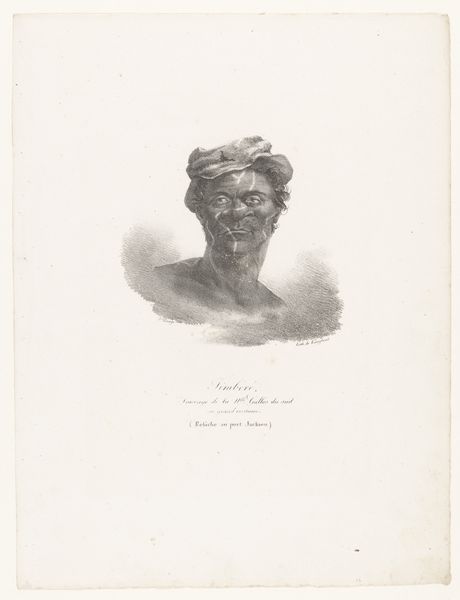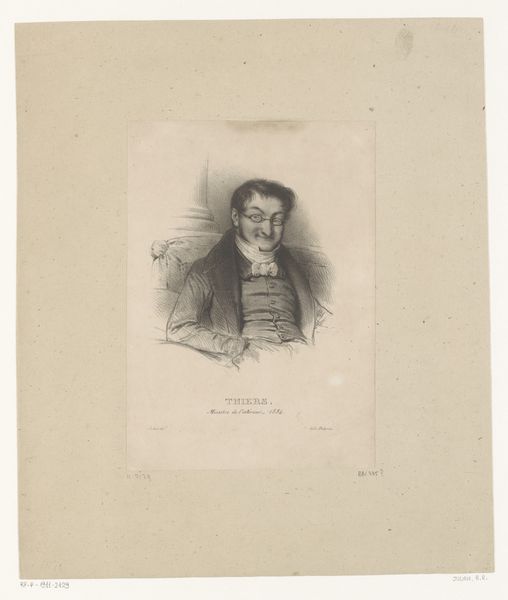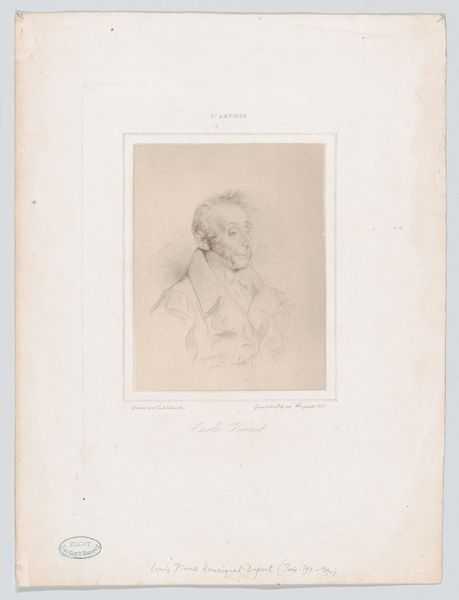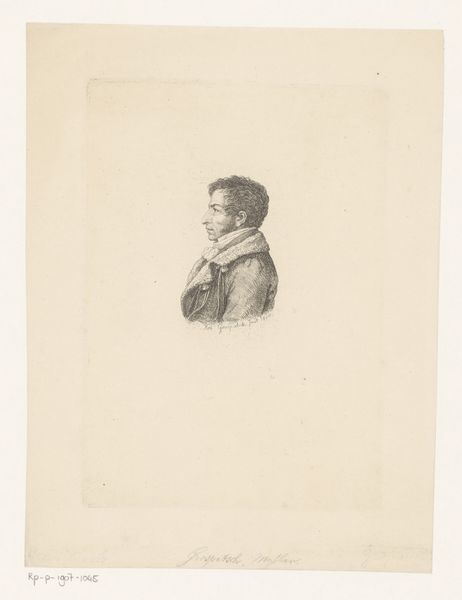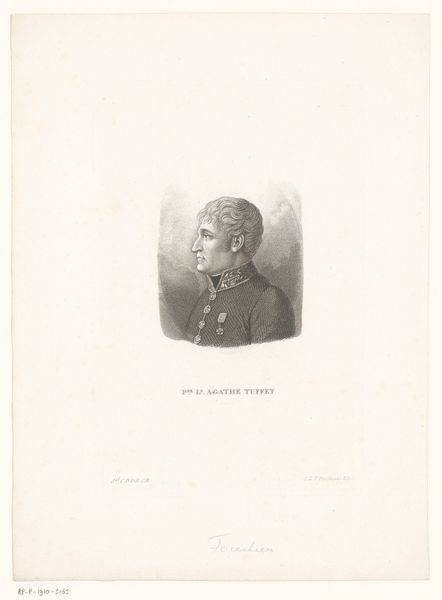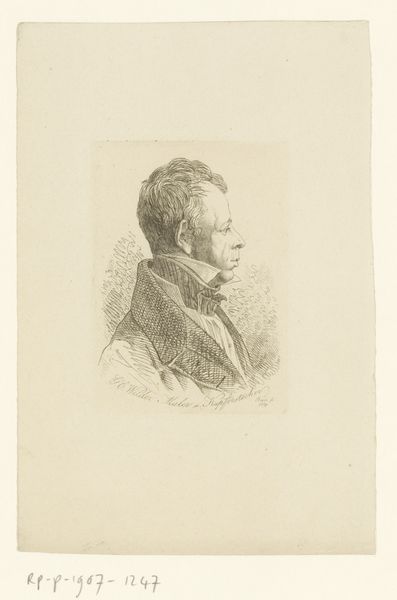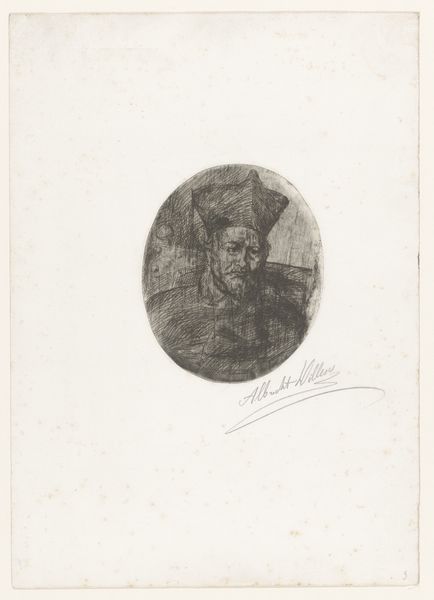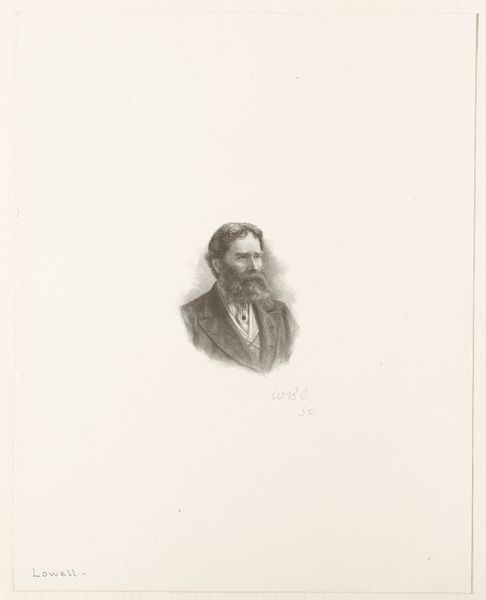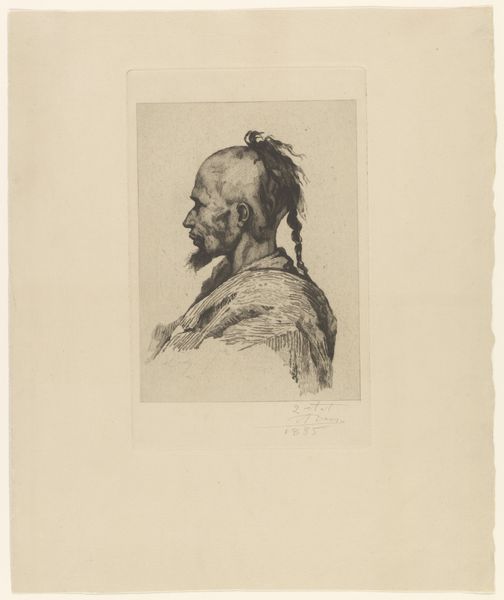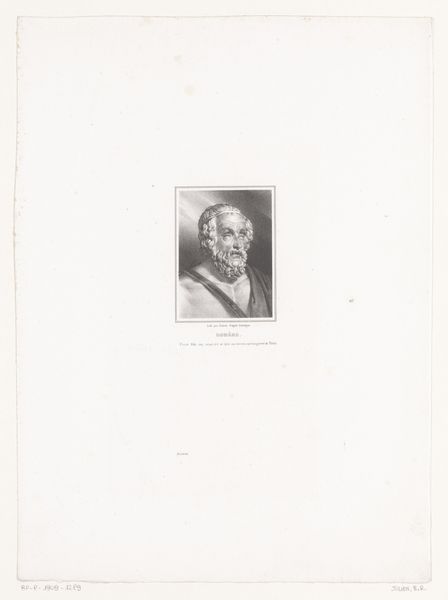
Portret van Ooro, koning van de Hawaïaanse eilanden 1822
0:00
0:00
drawing, ink
#
portrait
#
pencil drawn
#
drawing
#
amateur sketch
#
light pencil work
#
shading to add clarity
#
pencil sketch
#
old engraving style
#
indigenism
#
figuration
#
personal sketchbook
#
ink
#
pencil drawing
#
romanticism
#
sketchbook drawing
#
pencil work
#
history-painting
Dimensions: height 362 mm, width 272 mm
Copyright: Rijks Museum: Open Domain
Curator: Here, we see "Portret van Ooro, koning van de Hawaïaanse eilanden," or "Portrait of Ooro, King of the Hawaiian Islands," a drawing created by Jacques Etienne Victor Arago in 1822. What strikes you initially? Editor: The intensity of his gaze. It’s both captivating and unnerving, as if he's piercing right through you. And that stark contrast in the sketch work really emphasizes his features. Curator: Arago created this drawing during a period of intense colonial contact in Hawaii. He was part of a French scientific expedition. We need to acknowledge that portraits like these often served a purpose beyond mere representation; they became tools of empire. Editor: Precisely. Notice the visual markers – his hairstyle, his tattoos. These are potent symbols of his identity and status within Hawaiian society. Arago likely viewed these elements through a Western lens, but can we really know how much Ooro himself might have influenced this representation? Curator: That’s precisely the critical tension. While Arago likely aimed for scientific accuracy or perhaps even Romantic exoticism, the power dynamics are undeniable. The act of depicting Ooro is inherently tied to the broader context of colonization and the imposition of Western ways of seeing. Editor: And there’s an interesting ambivalence in the iconography itself. He is clearly presented as a king, yet the raw, almost unfinished quality of the drawing perhaps reveals a subconscious acknowledgement of the fragility of that power in the face of colonial expansion. The stark, white paper emphasizes this, like a void consuming his image. Curator: Indeed. It reminds us that art is never neutral. It is embedded in historical forces. Analyzing the artist's biases, the cultural context, and the subject's agency allows us to decode these historical layers. Editor: By focusing on these images and deconstructing their layered symbolism, we give a richer context for Hawaiian history that remembers the impacts of colonialism, but sees and centers King Ooro. Curator: This journey through art, identity, and power really illuminates how visual representation plays such a pivotal role in shaping historical narratives. Editor: Absolutely, reminding us that visual languages transcend time, continually sparking these important and necessary conversations.
Comments
No comments
Be the first to comment and join the conversation on the ultimate creative platform.
